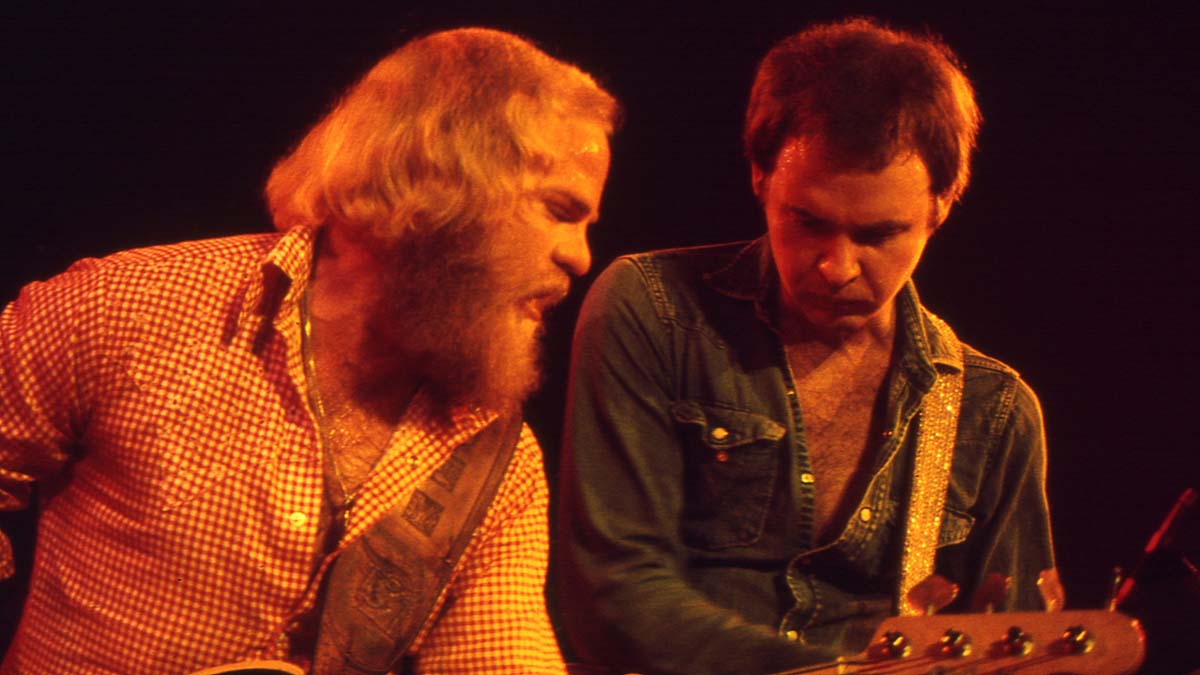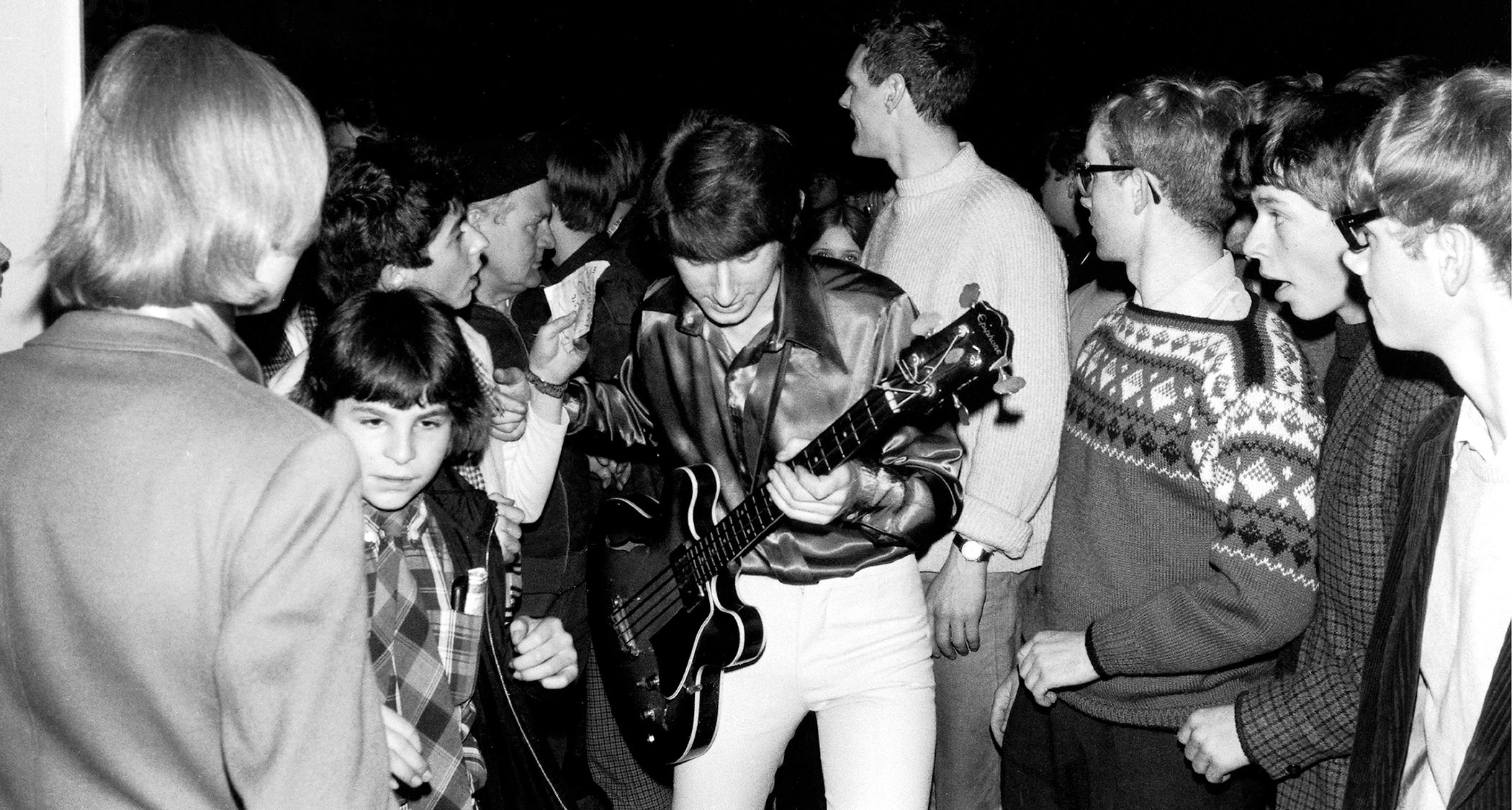Dusty Hill 1949-2021: paying tribute to the bearded boss of bass guitar
When the ZZ Top bassist left us on July 27, he left a legacy like few others. We look back at the career of a true bass original

I grew up down Texas way, working summers at my father’s sawmill, and scraping together minimum wage to buy a beat-up SG bass. The fretboard pyrotechnics of Sheehan and Lee were beyond my reach, but inspiration came slithering across the yard one scorching afternoon through the screen door of a nearby rib shack.
As I unloaded lumber from a boxcar, the bluesman growled about gold tooth displays and beauticians at the wheel of his V8 Ford, the backbeat matching the loping rhythm of our sawmill’s conveyor chain. Heat waves shimmied on the tracks as epiphany struck from the percolating bass, laying a muddy groove wide as the West Texas plains, with a mind-blowing breakdown at the end that was both bad and nationwide.
The band, of course, was ZZ Top – but copping bassist Dusty Hill’s parts proved to be a different kind of tricky. I dug into their back catalog, discovering that his approach wasn’t so much a matter of technique as attitude.
He owned the pocket and dug that trench deep, paving a foundation with gusto and restraint, stuttering licks in empty spaces and a funky syncopation engineered to make backsides move. There was plenty of flash and wit in ZZ’s clothes and stage shows, but the Top’s bottom end was all business.
Joseph Michael ‘Dusty’ Hill was born on May 19, 1949, playing the cello in school band and picking up bass guitar at the age of 13, when his older brother Rocky started a combo called The Warlocks.
“I kind of learned how to play on stage,” Hill told For Bass Players Only in 2016. “Embarrassment is a great motivator. If you don’t play well, standing up there with the lights on, it really stands out, so it behooves you to get your shit up pretty quick.”

Alongside drummer Frank Beard, Hill honed his chops with Dallas garage rockers American Blues and the Cellar Dwellers before teaming up with a 20-year-old Houston guitar wizard named Billy F. Gibbons to form ZZ Top.
All the latest guitar news, interviews, lessons, reviews, deals and more, direct to your inbox!
Early inspiration came from Charles Mingus and Jack Bruce, before the bassist stripped his lines to the purest essence and the “little ol’ band from Texas” hit big in 1975 with Hill’s raucous vocal on their first Top 40 hit, Tush, a 12-bar howling blues with Dusty locked on Beard’s snare and offering nothing more extravagant than the occasional walk.
Under the guidance of manager Bill Ham, ZZ Top engaged on a world tour that featured ‘The Dust’ decked out in Nudie suits and 10-gallon hats while throttling his Tele bass on a tilted stage the shape of Texas. Vultures, rattlesnakes, and longhorn steers roamed the platform as the band performed electrified, Southern-fried favorites like Jesus Just Left Chicago and Blue Jean Blues.
The Worldwide Texas Tour was so insane that the band went on hiatus after coming off the road. Beard hit rehab before heading to Jamaica; Gibbons left for London; and Hill got a work shirt with ‘Joe’ on the pocket and took a job at the Fort Worth airport.
“I didn’t want people to think I was full of myself,” he told Ultimate Classic Rock in 2019. “But the main thing is that I didn’t want to start feeling full of myself.” ZZ Top returned in the early '80s, trading their rhinestone jackets for scruffy suits, leggy blondes in hot cars, and... synthesizers?
Somehow, the bearded blues lovers went techno without losing their soul, thanks in no small part to the solid workmanship of Hill, whether rocking synth-bass and sequencers or spinning his fur-covered Dean ML Explorer while sporting a dirty fedora and cheap sunglasses.
The grizzled trio became unlikely stars on an upstart video music channel called MTV – and suddenly, ZZ Top was the coolest band on the planet. Their 1983 album Eliminator went 15 times platinum, yet the band avoided accusations of selling out.
At heart, the single Legs was just as greasy as ’73’s La Grange, and the Top could back it up live, gliding across stage on giant conveyor belts and ditching the vultures for a tarpsnorting cosmic Sphinx. ZZ Top’s personas became so larger-than-life that Texans petitioned to carve their faces on the side of the Lone Star State’s highest peak.
From the nimble funk of 1970’s Squank to the 21st-century gristle of Gotsta Get Paid, Hill was the master of bone-rattling swagger, consistently epitomizing the brilliance of economic cool, essential to the band’s swampy mash of surf-metal boogie, Texas swing, and proto-industrial blue-collar rhythm and blues.
Whether dishing out filthy slap on Thug or dissonant clank for the Talking Heads-meets-Steely Dan jam, Manic Mechanic, he knew precisely when to step up and when to lay back, anchoring the low end so the Reverend Billy G could throw sparks.
“Sometimes you don’t even notice the bass,” Hill noted in FBPO. “I hate that in a way, but I love that in a way. That’s a compliment. That means you’ve filled in everything and it’s right for the song. You’re not standing out where you don’t need to be.”
Dusty claimed his only addiction was collecting basses, favoring axes by famed luthier John Bolin and working with Fender to create a signature model fashioned after the Tele he bought from a Dallas pawn shop for 70 bucks.
Those looking to emulate his crunch can search for clues in the single-coil Seymour Duncans, Marshall Valvestate 8008, SFX Thumpinator, and Electro-Harmonix Micro POG – but insiders say the true secret lies in the way Hill’s stubby fingers attacked his instrument.
“My sound is big, heavy and a bit distorted because it has to overlap the guitar,” he said in 2012. “Someone once asked me to describe my tone, and I said it was like a rhino farting in a trash can.”
Inducted into the Rock and Roll Hall of Fame by Keith Richards in 2004, Hill faced a barrage of maladies in the subsequent years – surgeries on his ear, hip, and shoulder, contracting Hepatitis C, even accidentally shooting himself in the gut when a .38 derringer spilled from his boot.
Still, he didn’t miss a show in five decades, becoming a bass legend mostly for what he didn’t do: Get in the way of a bad-ass song. “I like to believe that I play bass like Dusty Hill,” he philosophized in Classic Rock, “and that’s something nobody else can do as well as me. I’m the best Dusty Hill I know.”
Every now and then, life comes full circle. Dusty and I both landed in Tennessee. He lived on a 50-acre solar-powered farm south of Nashville, somewhere between Moody Bros. Auto Body Shop and Crossroads Baptist Church. His influence served me well in Music City. Show up, play what’s best for the song, and never take yourself too seriously. Do that one thing you do that nobody else can.
I traded my SG bass for a ’73 Precision and focused on attitude and feel. One night, I was laying a nasty groove on Gimme All Your Lovin’, thumping accents on the two and four, doing the sidestep ZZ shuffle, heat waves rising while backsides were shaking on a packed dance floor.
A vision appeared near the back wall, ball cap and wraparound shades, head bobbing, beard flowing like Moses on the mount. His whiskers parted to offer a grin. As I nodded back, he vanished into the crowd. But it just might’ve been a mirage. ZZ Top’s original line-up lasted 51 years. The tres hombres from Texas liked playing music together and having fun.
They remain the coolest band on any planet. Dusty Hill died peacefully at home, nine days after playing one final show and a last fiery encore of Tush. He insisted that the boys carry on.
